Main Article: Mercedes-Benz O405G
The Mercedes-Benz O405G (Volgren) is the fourth and last generation of Mercedes-Benz O405G articulated buses acquired by Trans-Island Bus Services (TIBS), the predecessor of SMRT Buses. All buses were retired after the lifespan expiry date of 4 July 2019.
While these buses bears an exterior design based on the Volgren CR221 product, technical specifications and interior configurations are similar to the earlier Hispano Mark I, Mark II and Habit units. After a prototype unit entered service in July 2000, 20 more buses of this type were built. They entered service between August 2001 to July 2002.
This is also last bus model acquired by TIBS, prior to its rebranding into SMRT Buses.
SMRT Mercedes-Benz O405G (Volgren) Demonstrator – TIB1024H
In 2000, Trans-Island Bus Services (TIBS) introduced a fourth series of the Mercedes-Benz O405G buses, fitted with the Volgren CR221 city bus bodywork by Australian coachbuilder Volgren. The demonstrator unit was registered on 14 July 2000 as TIB1024H.
| Basic Technical Specifications | |
| Engine | Mercedes-Benz OM 447 hLA engine Inline 6-cylinder turbocharged, 11967 cc, Euro I Power/Torque rating of 299 hp (220 kW) @ 2200 rpm / 1250 Nm @ 1000 – 1300 rpm |
| Transmission | Voith DIWA 863.3 gearbox, three-speed automatic |
| Bodywork | Volgren CR221 Bodywork Chassis produced in Germany. Bodywork supplied by Volgren of Australia. Assembled in Malaysia by Supportrans. |
| EDS (Original) | LAWO ALUMA Electronic Display Signage (EDS) Green Flip-dot Matrix design |
| EDS (Replacement) | Mobitec MobiLED Electronic Display Signage (EDS) Orange LED Matrix design |
| Doors | SMC Transit doors Pneumatically-operated Double-leaf doors for entrance and both exits |
| Capacity | Licensed capacity of 59 seating + 73 standing = 132 total |
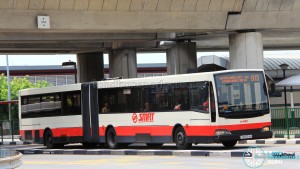
TIBS had previously engaged Volgren of Australia to build small batches of its buses, such as the Hino HS3KRKK, Dennis Lance and Mercedes-Benz O405. This would be the only time that it engaged Volgren for the building of an articulated bus.
The bus was fitted with a standard Mercedes-Benz OM447hLA (Euro I-rated) engine paired with a Voith DIWA 863.3 (3-speed) automatic transmission. Bodied by Australian company Volgren, it bore a similar design to existing Volgren-bodied buses in TIBS’ fleet as they were all adaptations of the CR221 bodywork. Underfloor air-conditioning was supplied by Konvekta. Dual-leaf inward-gliding doors were used for the entrance and two sets of outward-swinging plug doors were used for the exits, all supplied by SMC Transit (rather than Bode Masats). An Electronic Display Signage (EDS) of the Green Flip-Dot type was supplied by LAWO of the ALUMA model.
Additional Specifications:
The bus was registered shortly after the start of Hispano Habit registration. A later 20 more units were acquired in the Production Batch.
TIB1024H also underwent mid-life refurbishment, where the interior was repainted and seat covers were changed, from the original green fabric to blue, purple and red-coloured PVC covers.
TIB1024H retired on 13 July 2017, at the end of its 17-year statutory lifespan. Despite undergoing mid-life refurbishment, it did not receive a two-year lifespan extension owing to an accelerated fleet renewal programme.
SMRT Mercedes-Benz O405G (Volgren) Production Batch – TIB1178Y – TIB1197S
Following the successful evaluation of the Volgren demonstrator TIB1024H, Trans-Island Bus Services (TIBS) brought in 20 additional units of the Mercedes-Benz O405G with the Volgren CR221 bodywork. They were registered between 8 August 2001 – 5 July 2002 as TIB1178Y – TIB1197S.
| Basic Technical Specifications | |
| Engine | Mercedes-Benz OM 447 hLA engine Inline 6-cylinder turbocharged, 11967 cc, Euro II Power/Torque rating of 299 hp (220 kW) @ 2200 rpm / 1250 Nm @ 1000 – 1300 rpm |
| Transmission | TIB1178Y – TIB1187X ZF Ecomat 4HP 590 gearbox, four-speed automatic TIB1188T – TIB1197S Voith DIWA 863.3 gearbox, three-speed automatic |
| Bodywork | Volgren CR221 Bodywork Chassis produced in Germany. Bodywork supplied by Volgren of Australia. Assembled in Malaysia by Supportrans. |
| EDS (Original) | Transit Media TwinVision LeDot Electronic Display Signage (EDS) Green Flip-dot Matrix design |
| EDS (Replacement) | Mobitec MobiLED Electronic Display Signage (EDS) Orange LED Matrix design |
| Doors | SMC Transit doors Pneumatically-operated Double-leaf doors for entrance and both exits |
| Capacity | Licensed capacity of 59 seating + 73 standing = 132 total |
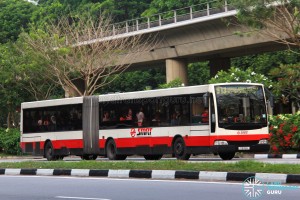
The buses were registered after the complete delivery of the first batch of Hispano Habits. The intake of a small number of Volgren O405Gs is reminiscent of the O405, where TIBS also purchased a small number of Volgren-bodied buses in addition to a majority of Hispano-bodied buses.
These buses were fitted with a standard Mercedes-Benz OM447hLA (Euro II) engine paired with in a mix of Voith DIWA 863.3 (3-speed) and ZF Ecomat 4HP590 (4-speed) automatic transmission units.
Bodied by Australian company Volgren and assembled in Malaysia, underfloor air-conditioning was supplied by Hispacold. Dual-leaf inward-gliding doors were used for the entrance and two sets of outward-swinging plug doors were used for the exits, all supplied by SMC Transit (rather than Bode Masats). A Green Flip-Dot type Electronic Display Signage (EDS) was supplied by Transit Media of the TwinVision LeDot model.
The first 10 units (TIB1178Y – TIB1187X) were built with slightly different specifications than the last 10 units (TIB1188T – TIB1197S):
| TIB1178Y – TIB1187X | TIB1188T – TIB1197S |
| – ZF 4HP 600 gearbox – Normal window line (smaller windows) |
– Voith DIWA 863.3 gearbox – Lower window line (larger windows) |
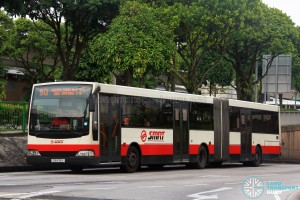
Refurbishment / Modifications
All buses of this batch underwent mid-life refurbishment, which involved refitting the interior of the bus with new equipment. Body panels and air-conditioning ducts were repainted/replaced, and stanchion poles were painted orange for better visibility.
Synthetic fabric seat covers replaced the original grey mosaic-patterned fabric covers which often trapped plenty of dust. The new seat covers were coloured blue and purple with red for priority seats. All buses have a newer Mobitec MobiLED EDS unit (Orange LED type), replacing its old flip-dot Transit Media Flip-dot type EDS.
Interior:
The interior of the bus has two cabins permanently joined by an articulation unit. The bus seats four-abreast with a central aisle running the length of the bus. Grab poles and round hand grips are located on both sides of the aisle, with additional handrails at the standing area, or stanchion poles near the exits or articulation unit. All seats also have hand grips to provide commuters with additional support.
Bus stopping bell-pushes are located around the bus cabin, either mounted to stanchion poles or on the pillars in-between windows. Emergency hammers are also located on these pillars.
The front cabin has a front entrance door and middle exit door, with a small standing area opposite the exit door. Four rear-facing seats are located just behind the front axle wheel wells. The Passenger Information System (PIS), a LED text display, shows the next bus stop name, along with “Bus Stopping” if the stop button has been pressed.
One might notice that the seats used are different between the photos below. Indeed, different buses were refurbished with different models of seats. The ones with the shallow, rounded bar above the seat are Vogelsitze System 600 seats. The ones with the higher, angled bar forming a trapezoid shape are the Vogelsitze System 750/3 seats, which are found on many newer buses.
The rear cabin has a mix of both front-facing seats and side-facing seats, with five seats on the last row of the bus. The third door of the bus is for alighting only.
The side-facing (or aisle-facing) seats are unique to the Volgren-bodied Mercedes-Benz O405G. The earlier three O405G bodywork variants produced by Hispano Carrocera do not feature any side-facing seats.
The first-generation Passenger Information System (PIS), formerly located at the front of the bus, was relocated to the rear cabin and only shows the day, date and time.
Finally, the articulation unit consists of a turntable platform with two hinges in the middle, allowing for both pitch and yaw motion. Folding bellows help weatherproof the articulation unit. Two stanchion poles are also installed in the middle for additional support, whereas Hispano-bodied O405G buses only featured one stanchion pole.
The layout of the driver’s compartment is largely similar to that of Hispano-bodied O405G buses, with the only difference being the placement of fare equipment.
The turquoise unit on the bottom left is the New On-board Bus Equipment (NOBE) fare collection system. Just above that is the Trapeze Common Fleet Management System (CFMS). To the right is a small display monitor that functions as a reverse camera, which switches to a view of the third door when it is open.
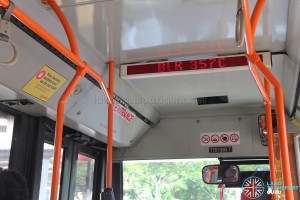
Passenger Information Systems
All Mercedes-Benz O405G (Volgren) buses feature a Passenger Information System (PIS) which displays the name of the next bus stop as static text. If the bus stop name exceeds the length of the display, the name will scroll on the display instead. It will also alternate between the bus stop name and “Bus Stopping” when the bus stop bell is pressed.
At the rear cabin, an illuminated Bus Stopping indicator lights up when the bell is pressed.
Gallery:
Related Article
External Links & References:
Back to Mercedes-Benz O405G
Back to Bus Models
Back to Bus
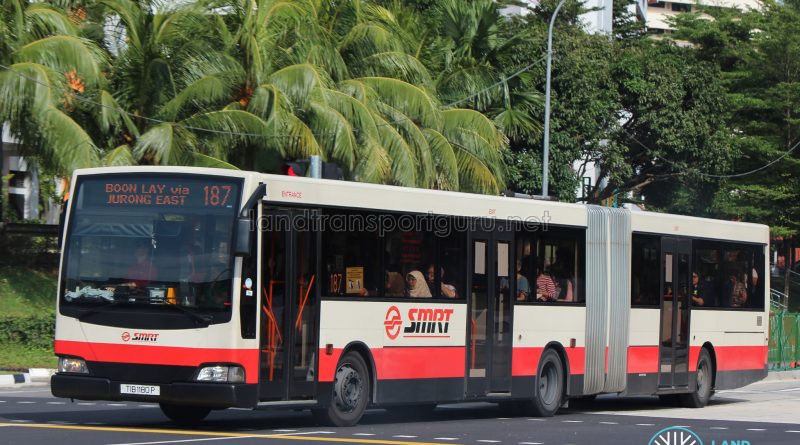

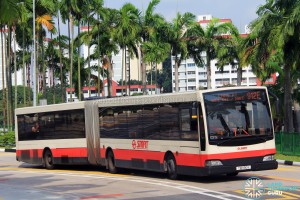
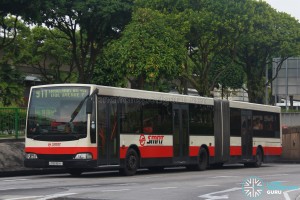
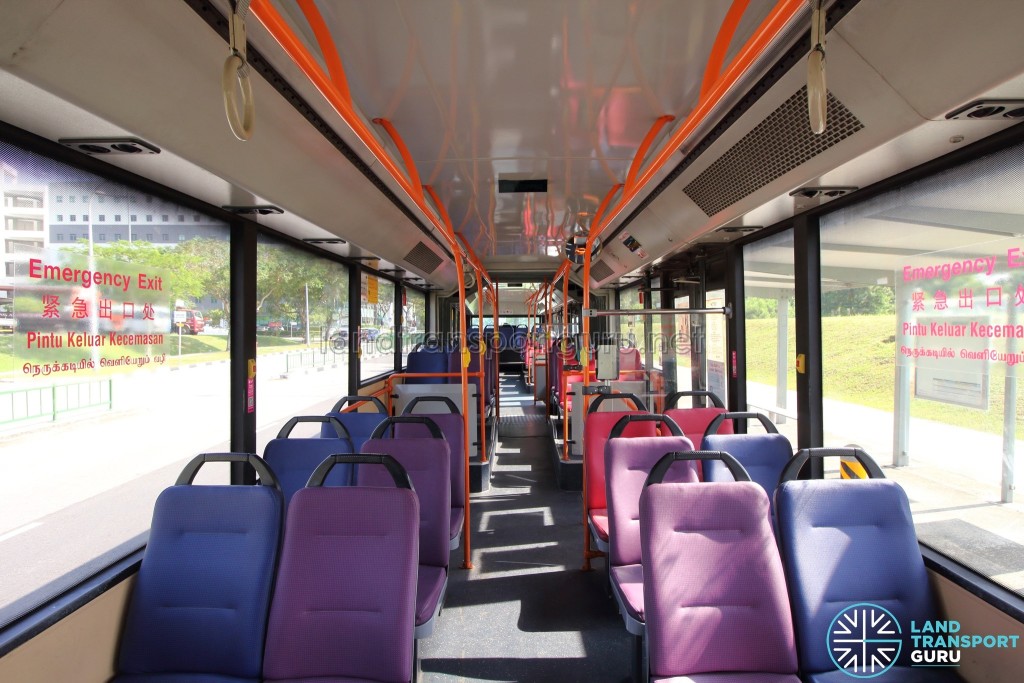

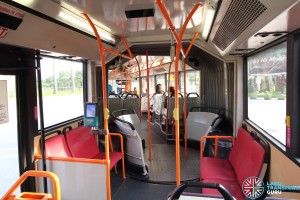
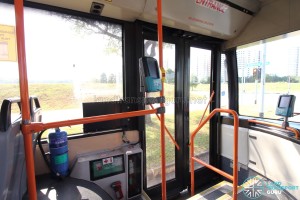
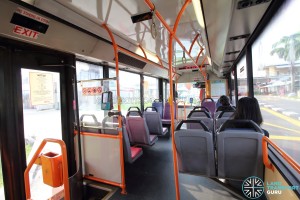

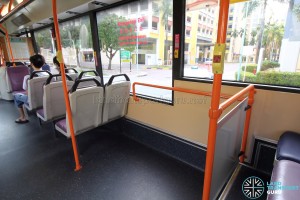

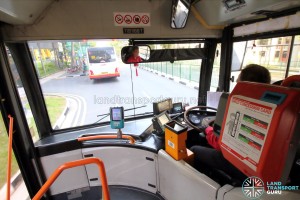
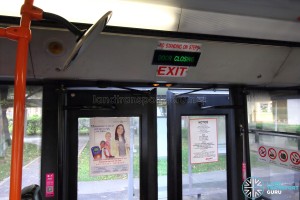
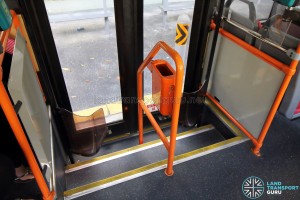
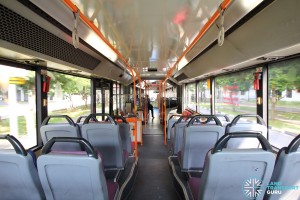

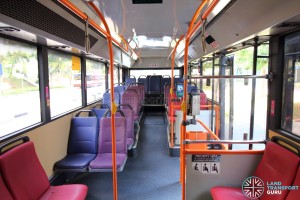
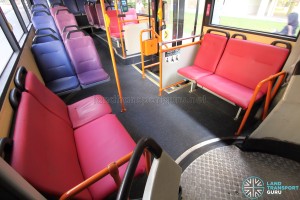
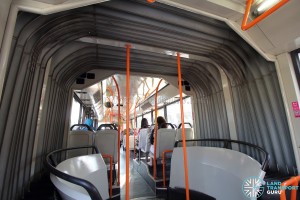
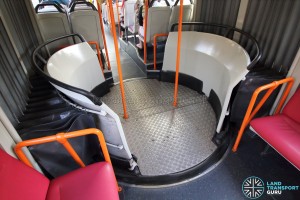
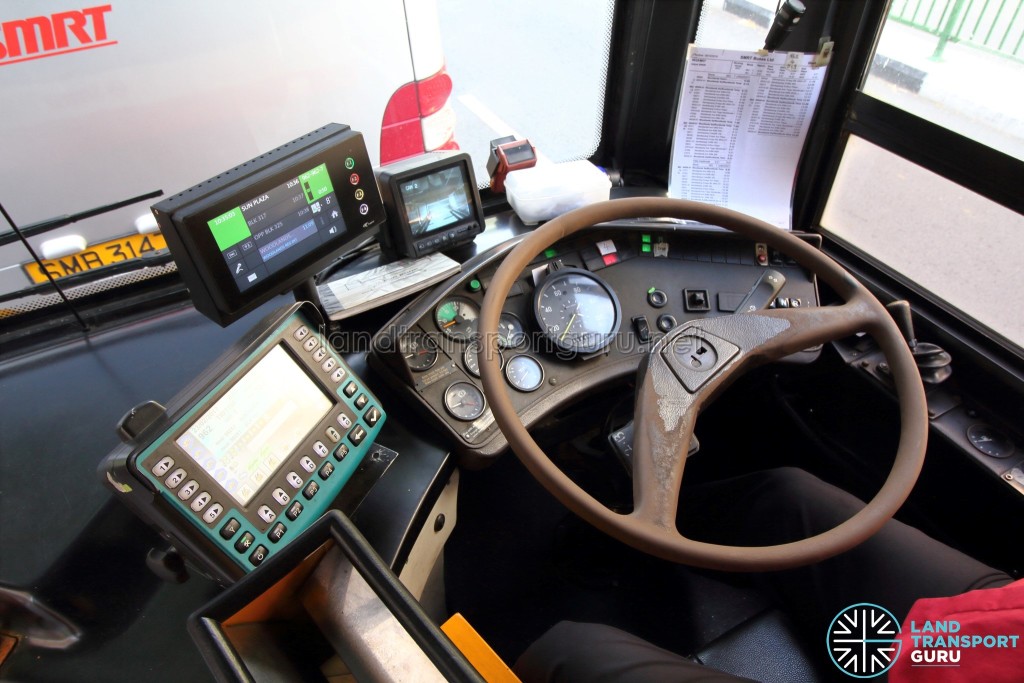
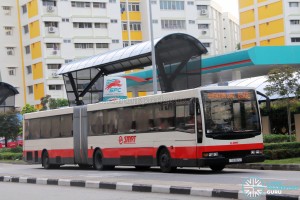
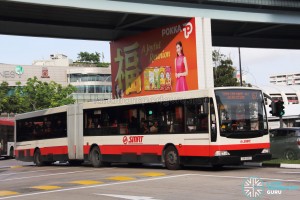
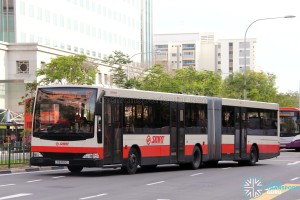
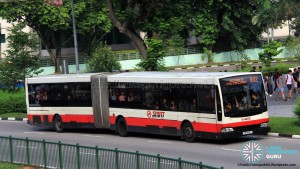
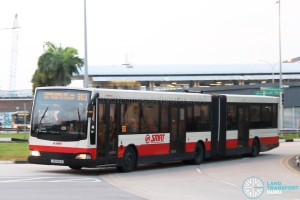
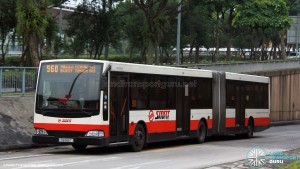
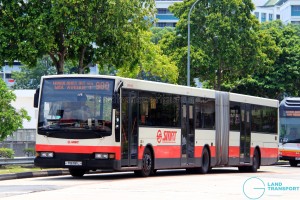
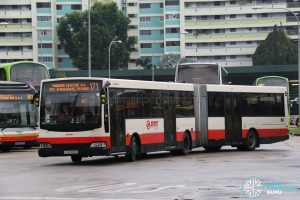



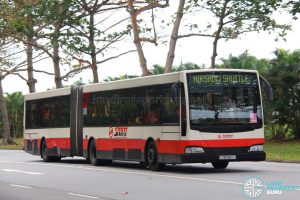
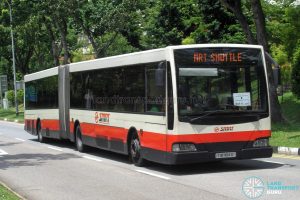
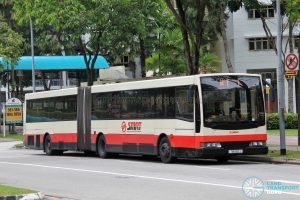

Bye Volgrens we’ll miss you!! 👋😢🚌